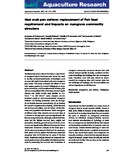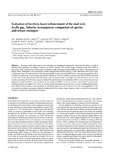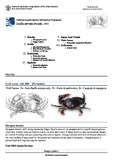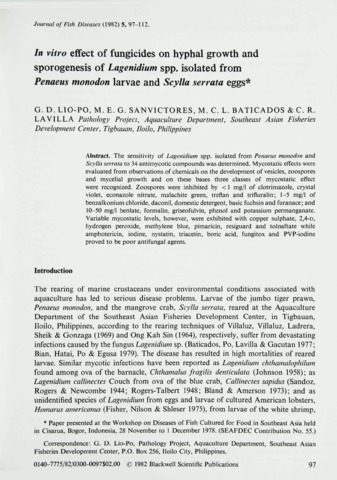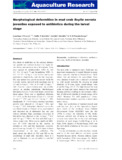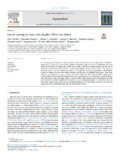Search
Now showing items 1-10 of 43
Economic feasibility analysis of the monoculture of mudcrab (Scylla serrata) Forsskal
Mudcrabs, Scylla serrata Forsskal, were monocultured at different stocking densities: 5000, 10 000, 15 000 and 20 000/ha for 90 days. Highest mean weight, survival and relative growth increment (P>0.05) were obtained from ...
Induction of moulting in hatchery-reared mangrove crab Scylla serrata juveniles through temperature manipulation or autotomy
(Wiley, 2019)
The effects of temperature and autotomy of chelipeds on survival, growth and moulting of mangrove crab (Scylla serrata) juveniles were investigated under laboratory conditions for 60 days. Hatchery‐produced crabs with ...
Mud crab pen culture: replacement of fish feed requirement and impacts on mangrove community structure
(Blackwell Publishing, 2010)
Brackishwater pond culture has been a major factor in mangrove loss in Southeast Asia, hence, the need to develop environment-friendly technologies such as mud crab Scylla (Portunidae) culture in mangrove pens exists. This ...
Evaluation of hatchery-based enhancement of the mud crab, Scylla spp., fisheries in mangroves: comparison of species and release strategies
(CSIRO Publishing, 2009)
Ranching, stock enhancement and restocking are management approaches involving the release of wild or hatchery-bred organisms to enhance, conserve or restore fisheries. The present study, conducted from April 2002 to ...
Community-based technology transfer in rural aquaculture: The case of mudcrab Scylla serrata nursery in ponds in northern Samar, central Philippines
(Springer Verlag, 2014)
Finding aquaculture development approaches to open up livelihood opportunities for the rural poor and in mainstreaming smallholder fish farmers to reduce poverty remain a challenge. This paper examines the community-based ...
Cultured Aquatic Species Information Programme - Scylla serrata (Forsskål, 1755)
(Food and Agriculture Organization of the United Nations, 2015)
In vitro effect of fungicides on hyphal growth and sporogenesis of Lagenidium spp. isolated from Penaeus monodon larvae and Scylla serrata eggs.
(Blackwell, 1982)
The sensitivity of Lagenidium spp. isolated from Penaeus monodon and Scylla serrata to 34 antimycotic compounds was determined. Mycostatic effects were evaluated from observations of chemicals on the development of vesicles, ...
Morphological deformities in mud crab Scylla serrata juveniles exposed to antibiotics during the larval stage
(Wiley, 2017)
The effects of antibiotics on the external deformities, growth and survival of mud crab Scylla serrata larvae and juveniles were determined. Zoeae were exposed to oxytetracycline (OTC) (0, 3.0, 6.0, 9.0, 12 mg L<sup>-1</sup>) ...
Larval rearing of mud crab (Scylla): What lies ahead
(Elsevier, 2018)
The increasing global demand for mud crabs (genus Scylla) and threats to the wild populations highlight the urgency of fully rearing them in captivity. Despite considerable progress in mud crab production, most crab farms ...
Studies on the fungal diseases in crustaceans. I. Lagenidium scyllae sp. nov. isolated from cultivated ova and larvae of the mangrove crab (Scylla serrata)
(Mycological Society of Japan, 1979)
Lagenidium scyllae , a marine mastigomycete from the ova and larvae of the mangrove crab, is described and illustrated as new. The fungus grew at a temperature range of 16-42 C, with an optimum at 22.5-31.8 C. It grew well ...




